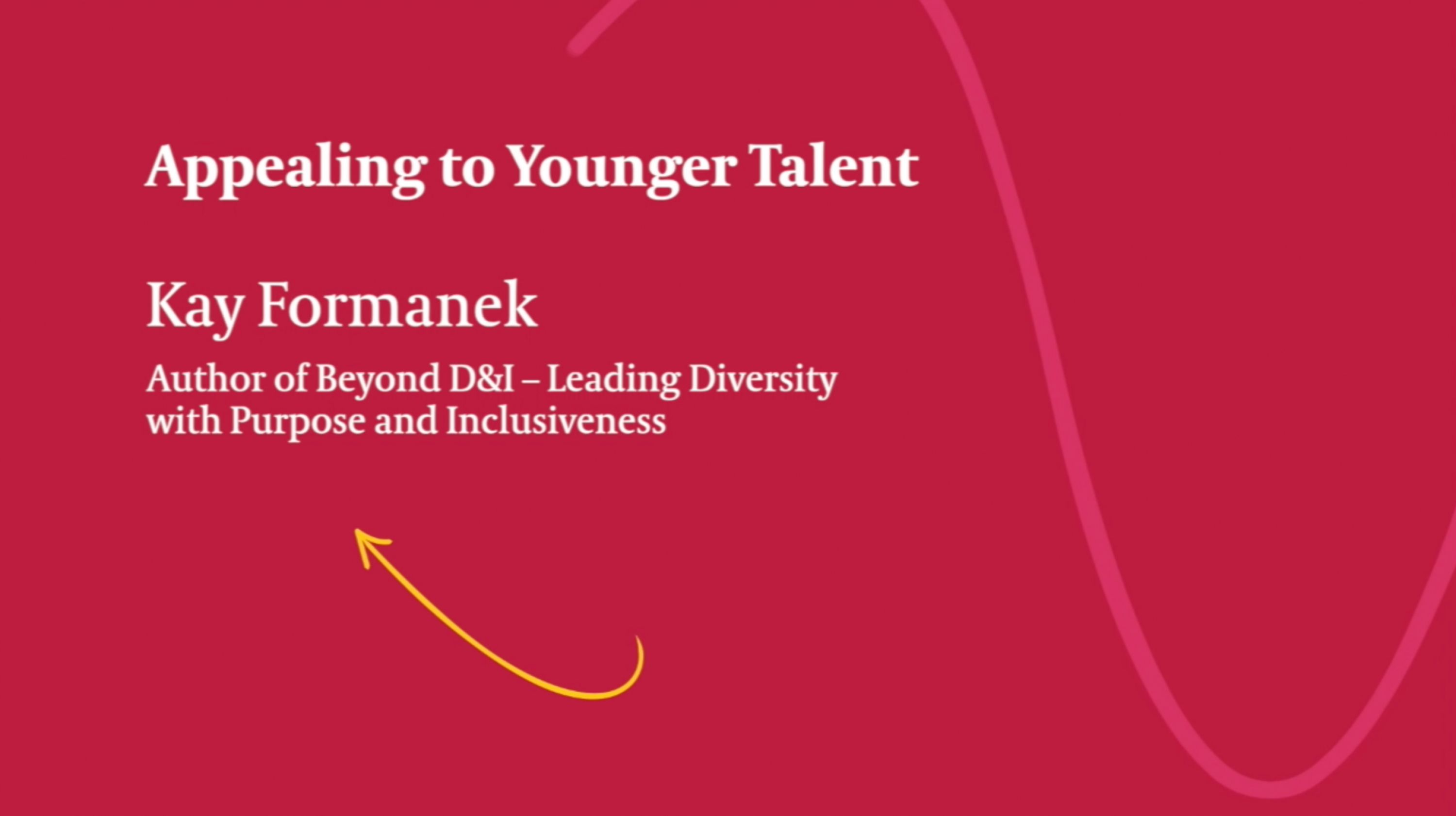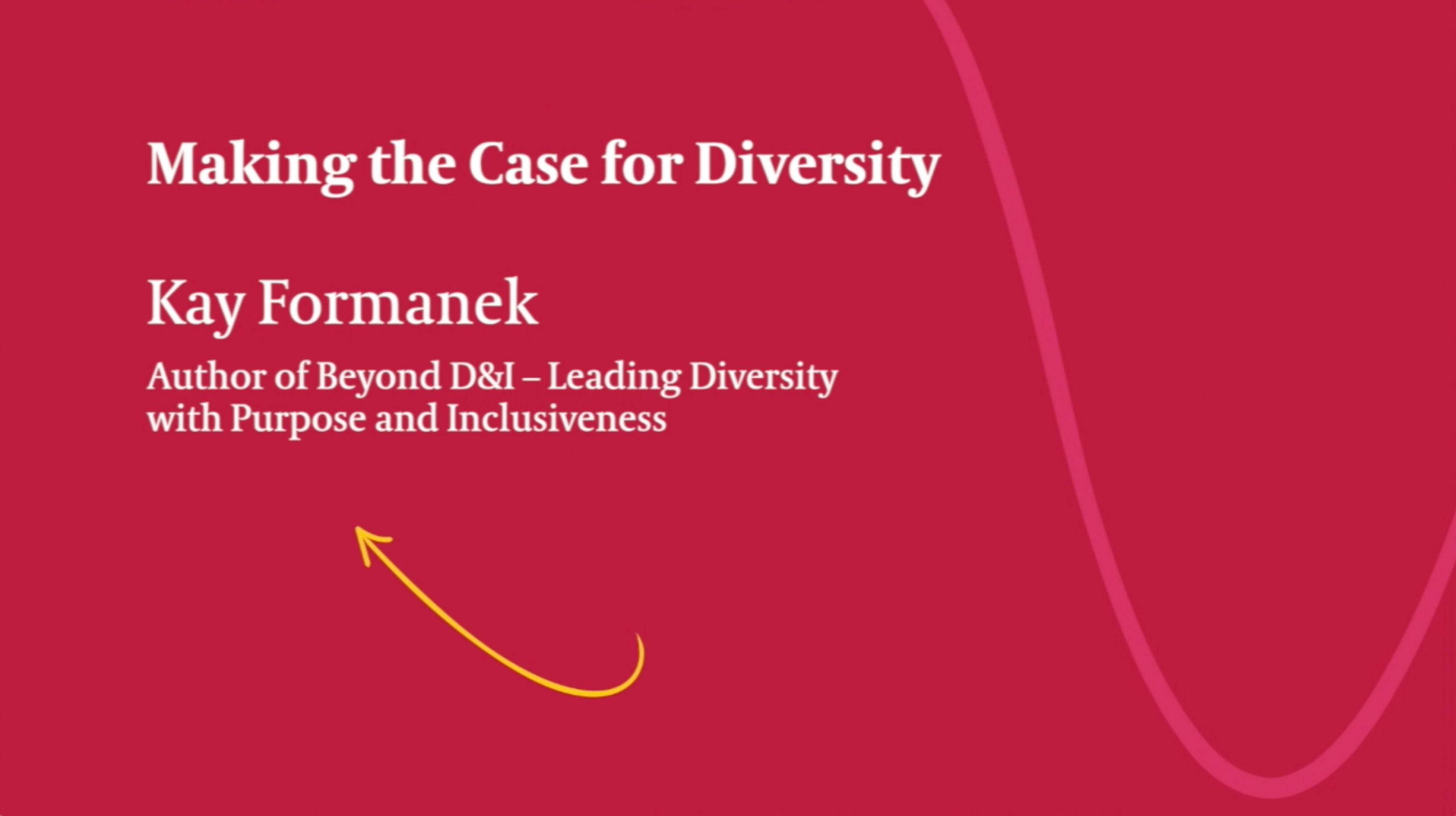Egon Zehnder’s Jill Ader and Edwin Smelt were delighted to catch up with Kay Formanek and hear her practical and deeply human insights on Diversity, Equity & Inclusion. Kay’s fresh approach is making an impact on teams and organizations in many industries.
Edwin Smelt: Kay, it’s wonderful to have you here to enlighten us on this topic so close to our hearts. Can you start by introducing yourself, your journey and your passion for diversity?
Kay Formanek: My journey began in South Africa, where I grew up in the time of apartheid, a policy of legalized discrimination on the grounds of race. My parents sent me to one of the few multi-racial boarding schools. On the one hand, I saw segregation and polarization on the basis of race; but on the other, my closest friends were people of color.
In South Africa I learnt that it is possible to tap into diversity as a source of opportunity when guided by an inclusive leader. The tides turned when Nelson Mandela embraced diversity and Archbishop Desmond Tutu created a mantra for it: “the rainbow nation”. They showed that when one looks beyond race, one sees the person – that's where magic happens.
I then moved to the Netherlands, where I’ve now lived for 20 years. I was partner and managing director of Accenture, and sponsoring partner for advancing Diversity, Equity & Inclusion. About eight years ago, I founded a company called Diversity and Performance, to advance Diversity, Equity & Inclusion in organizations. I'm an author, speaker and advisor on diversity – and a very proud mother of three children.
Jill Ader: For Egon Zehnder, diversity is a huge part of our belief in leadership for a better world – which is our purpose. Yet there's a lot of fatigue nowadays over the topic of Diversity, Equity & Inclusion. Maybe you could help us understand the stages of maturity as they relate to diversity.
Kay: Fatigue occurs when we are unsure of what we mean by diversity, we doubt the authenticity of the messenger or their message, and we do not see results. That's what has happened around talk of diversity: we’re not clear why we are advancing diversity, what dimensions of diversity we seek to increase, and how to realize our Diversity, Equity & Inclusion aims. This is why I advise organizations to be clear upfront on the “WHY”, the “WHAT” and the “HOW” of their diversity journey.
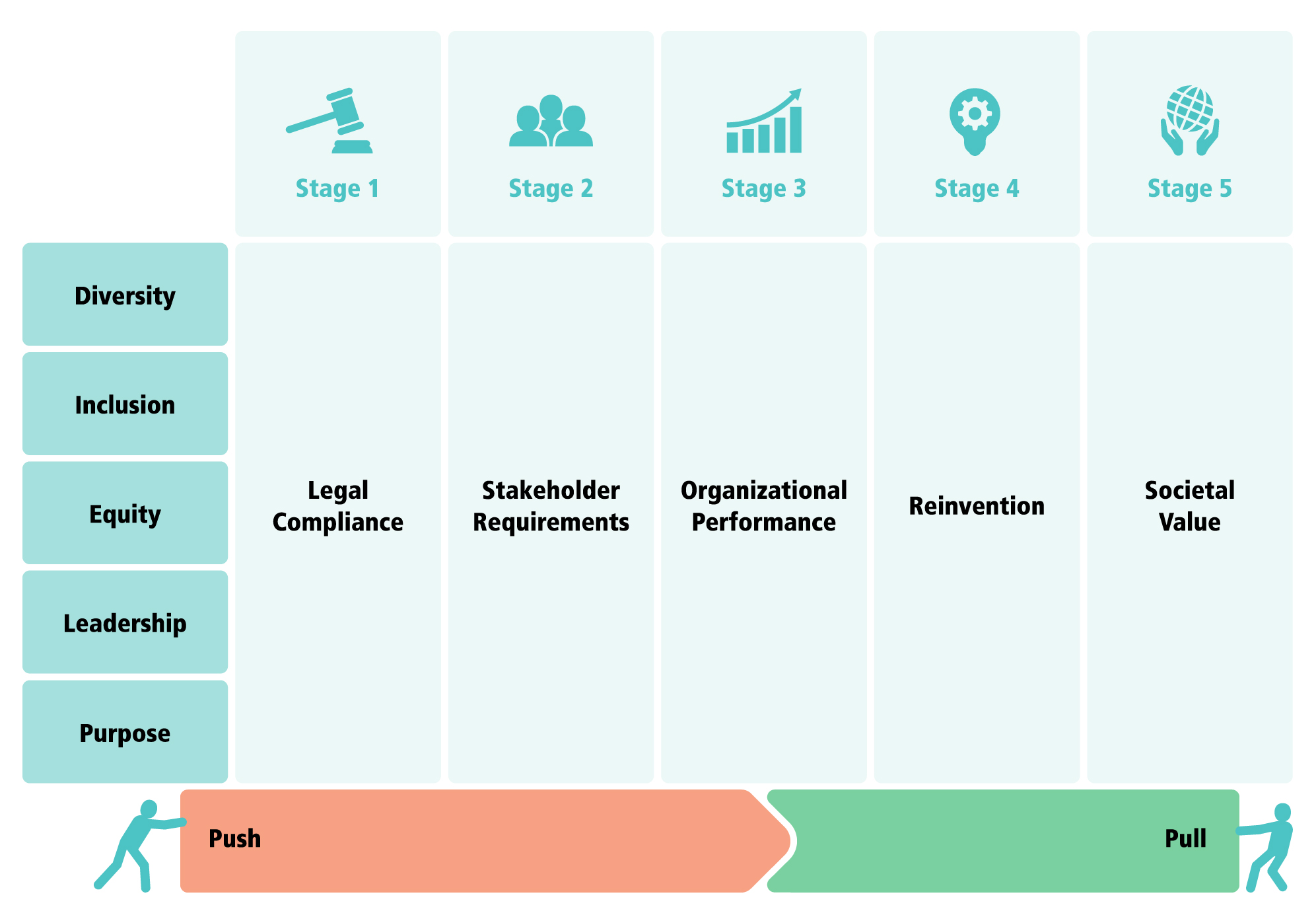
A review of organizations reveals that they typically align to one of five evolutionary stages of diversity. Some just want the basics. “Let’s ensure we have no discrimination, compliance issues, class actions, or lawsuits.” That's stage one: Legal Compliance. Other organizations say, “Let’s satisfy a minimum level of stakeholder requirements, whether from our clients or employees, so that we do not incur stakeholder penalties." That’s stage two: Stakeholder Requirements. Organizations at these two stages focus on diversity in a response from a “push” by the law and stakeholders.
Organizations at stage three, Organizational Performance, are convinced of the business case for diversity. There is a “pull” on diversity to support organizational performance, such as increased innovation, enhanced customer congruence, and access to talent. At stage four – Reinvention – organizations recognize that a diversity of perspectives is critical for their ability to transform themselves and remain relevant.
At stage five – Societal Value – organizations pursue diversity because they believe it is the key to sustainability and social equity, and they want to be part of that.
Each organization needs to understand its strategic narrative for diversity, whether it is to achieve compliance or performance or transformation, and craft its own journey. No diversity journey is the same: context and ambition is key.
Jill: In our recent global survey of CEOs, 97% said that they have to transform themselves in order to transform their organizations. This was up nearly 20% from our last survey, in 2018. Are we on the cusp of something?
Kay: Yes. Diversity is becoming more personal. Leaders have the same view on diversity as they do on transformation: “I need to acknowledge my own diversity in order to foster diversity in the organization.” It starts with the leader – 70% of an inclusive environment is directly linked to a leader’s behavior.
Jill: What does it take to be an inclusive leader?
Kay: Inclusive leaders are committed and courageous, leading by example in words and actions. These are leaders who are committed to diversity not only because they are convinced that it is good for the organization, but because the advancement of Diversity, Equity & Inclusion aligns deeply with their personal values.
So many leaders don't lean in because they're scared. They're walking on eggshells. By contrast, leaders who embrace diversity have taken the time to get feedback about different cultures and backgrounds. They are cognizant of their bias, their blind spots. And they are courageous: The journey of diversity is not easy. It takes courage to act, get critical feedback and learn from it.
Edwin: At the same time, it seems that at the middle management level, Diversity, Equity & Inclusion is seen as an isolated topic. How can we show managers that diversity and curiosity are closely linked, and that everyone can join the discussion – and grow?
Kay: Indeed, often the middle management level is forgotten in diversity journeys. Yet, middle managers interact most intensely with teams, and are critical in supporting diversity objectives. We can focus on managers by addressing their anxieties, offering coaching and support, and recognizing and rewarding those who support an inclusive environment.
Jill: I think people need to see their leaders being brave and vulnerable and willing to make mistakes. I remember being asked to go on stage at Davos, talking on an LGBTQ topic. I was so nervous because I was worried I would say something wrong. Yet my main message to the leaders there was just, “Lean in and start having the dialogue, asking what's important and what makes a difference.” That way we navigate complex problems with human answers.
Jill: Kay, if we look at different types of diversity, where have we achieved key results, and where are we lagging?
Kay: Many organizations have tended to focus on the inherited dimensions of diversity, such as gender, age, race, people with disabilities, and sexual persuasion – LGBTQI+. Increasingly, organizations are tackling other aspects of diversity, such as specialization, culture, background and personality. The focus on gender diversity produced initial gains, but COVID has undone some of them: many women in leadership took a step back or out of the organization in response to increased working hours combined with care responsibilities. The tragic killing of George Floyd two years ago, and the global BLM movement, have led more and more organizations finally to focus on ethnic and race diversity and advancement. I remain disappointed at the meager attention from most organizations to advancing equity and opportunities for people with seen and unseen disabilities.
Jill: Hopefully working from home allows more access to jobs and learning for many who have disabilities, if companies step up and seize the moment.
Kay: Yes. And there are organizations that are taking the opportunity to support diversity, saying, “Covid-19 is a reset. How can we use this challenge to support a hybrid model of work and reduce barriers to entry for talented people, including those with disabilities?”
Leaders ask me how they can nurture diversity. They're surprised when I reply that inclusion starts with genuine interest: "How are you doing?" or "What can I do to support you?". And we forget how important it is to simply say, “Hello”.
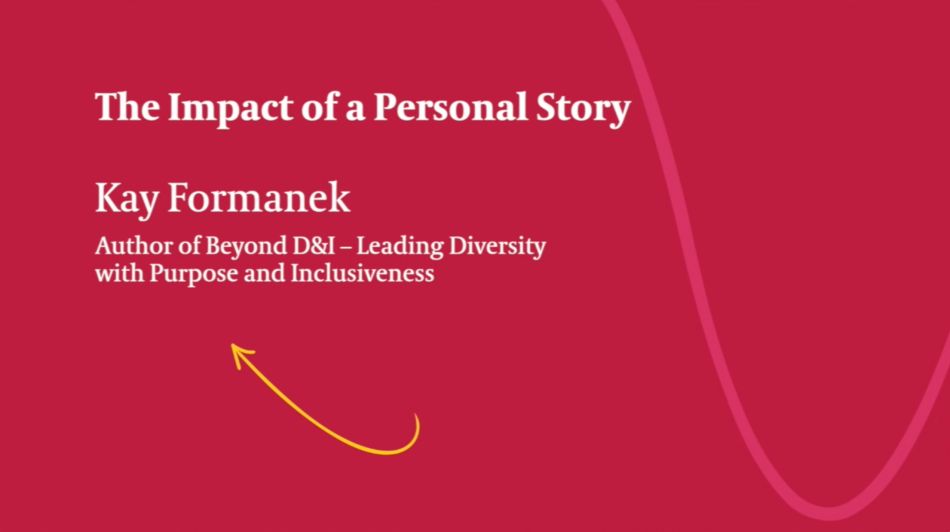
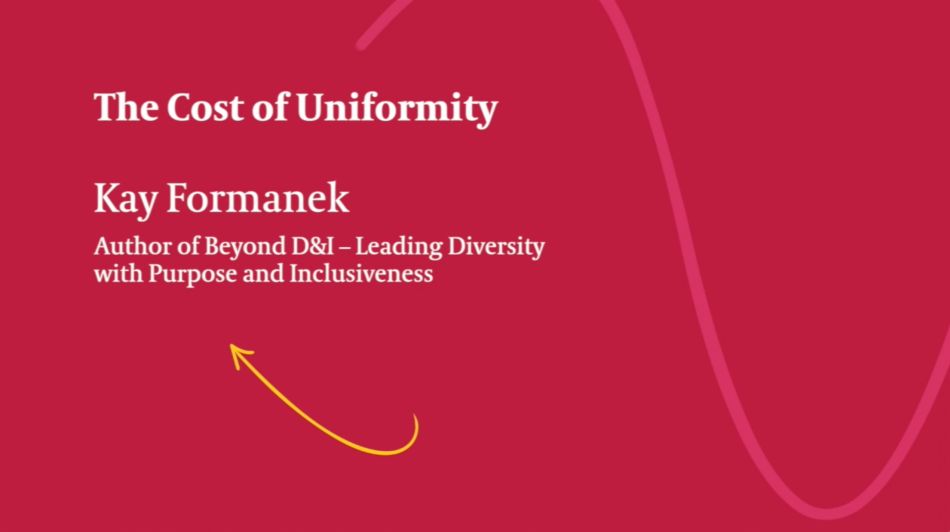
Jill: What do you think organizations should be tracking on their Diversity, Equity & Inclusion journeys?
Kay: Clearly, it’s important to ask: What dimensions of diversity are important? What is our baseline, and what is our target?
If you look at equity, which involves fairness and access to resources, it starts by identifying barriers to participation, and seeking interventions, such as access to networks or sponsors – and then monitoring whether the interventions are succeeding.
But in terms of inclusion, you don't need an elaborate survey. A simple question is key: “Do you feel included and have a sense of belonging?”
Edwin: An intricate general discussion about diversity can add to fatigue – when ultimately, it’s about individual people …
Kay: … and their individual stories. I was working for an organization in France where the CEO was committed to diversity. He would have these town halls and would always talk about diversity – but impersonally. “Diversity is essential for our organization and innovation.” I was at the town halls and could see that there wasn't resonance.
This leader had a son who was confined to a wheelchair. And at one town hall, the CEO took a different approach. He said, “Over the last three years, you've heard me speaking about why diversity is important for our organization. Today, I want to talk about why diversity is important to me. As a father, this is what I've witnessed.” The whole crowd leaned in. And then they started talking about their stories.
As well as personalizing the story, organizations can anchor diversity in their own mandate, and make diversity understandable from an organizational perspective. A hospitality organization may say, “Our guests are from different cultures, different religions, and our mandate is to make them feel at home. We can only do that if we embrace diversity. Otherwise, our guests won't come here.”
Translating talk of Diversity, Equity & Inclusion into action
Kay notes that fewer than a quarter of diversity initiatives translate to real diversity action, and most initiatives may even build resistance to diversity objectives.
Organizations achieve the “HOW” of diversity by fulfilling six essentials:
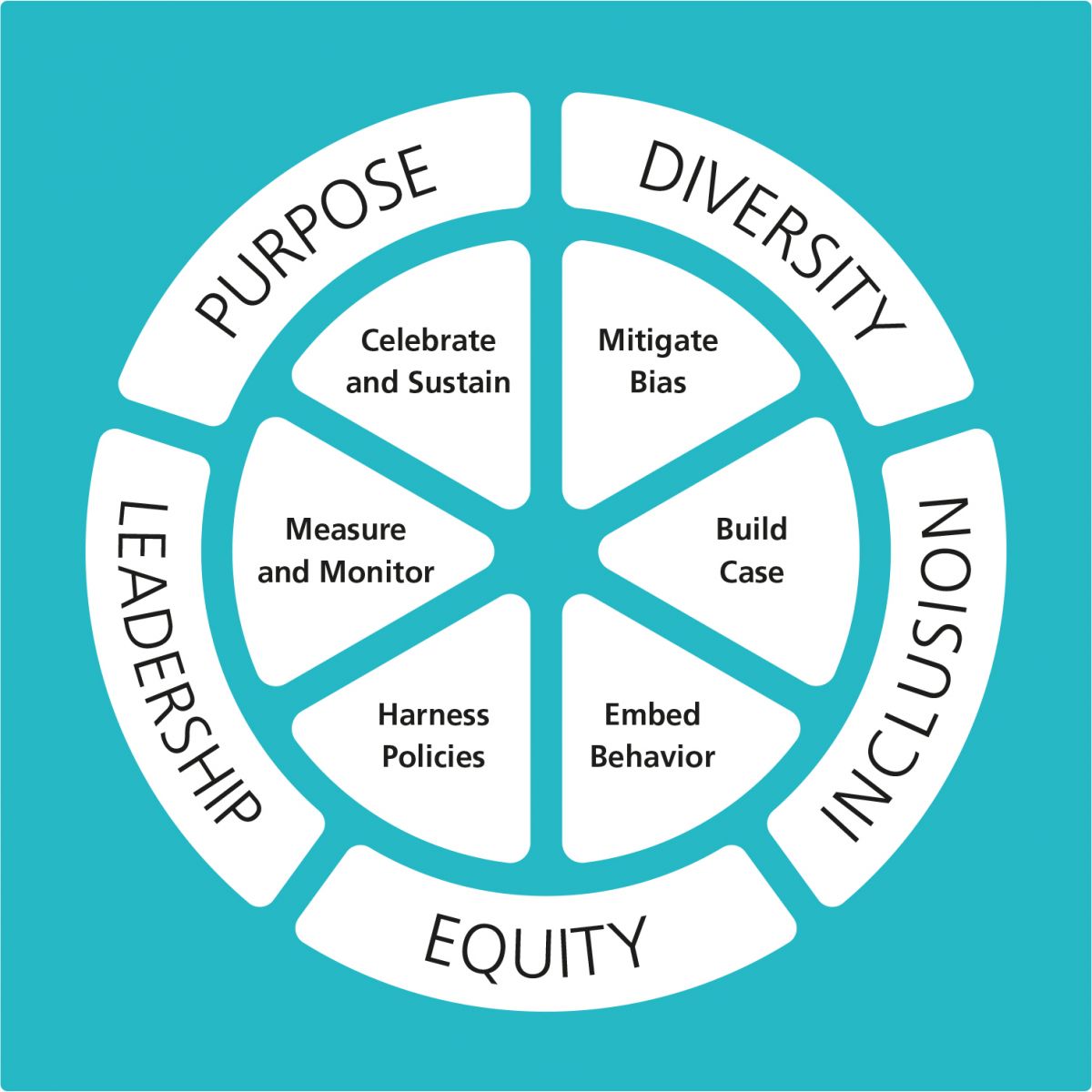
- 1. Mitigate bias—mitigate personal and systemic bias
- 2. Build the case—link diversity objectives to the organization’s mandate and strategic goals
- 3. Embed behavior—hold people accountable for supporting an inclusive environment
- 4. Harness policies—put in place the right policies to guide, reward and promote daily Diversity, Equity & Inclusion practices
- 5. Measure and monitor—measure and monitor progress in achieving the diversity objectives
- 6. Celebrate and sustain—energize collective commitment to the Diversity, Equity & Inclusion journey, stay aligned with stakeholder expectations, and support the organization’s transformation journey
Edwin: Personalizing a story and anchoring Diversity, Equity & Inclusion in an organization’s mandate also move us away from gender stereotyping and conformity.
Jill: Yes – and the biggest enemy of diversity is conformity. This is about humanity, about helping everybody feel heard, respected, and able to unlock their potential.
Edwin: The price of conformity can be huge. If I look at crises caused by people, whether in business or other areas, nearly always it’s because of a lack of diversity of thinking at the top.
Kay: We must never forget about the opportunity cost of lacking diversity. In my book I talk about the Central Bank of Ireland. In 2008, just before Lehman Brothers collapsed, the Central Bank was asked, “How well equipped is Ireland to anticipate and withstand the financial risk arising from the United States?” The assessment was, “We are in a strong position.” The next day, two Irish banks collapsed. The government had to bail them out, and Ireland went into recession.
A commission was organized to ask why there was an inadequate assessment of the impending risk. One key finding was it came down to groupthink. The leadership team and organization of the Central Bank had a similar educational and professional experience, and were mostly men over the age of 52. Without sufficient diversity of thought, a 360-degree view in the rapidly changing environment was impossible. The Central Bank was able to transform itself because the risk of not having diversity was clear. Nowadays there is gender parity, and involvement not only from people with an economics and banking background, but also liberal arts, psychology and sociology.
Jill: At Egon Zehnder we've always talked about a war for talent, but I have never seen it as acute as it is now. What is your advice to leaders as they face this competition?
Kay: The younger generation are going to organizations that value diversity. They're looking at inclusiveness and the opportunity to connect. They want to have leaders that are role models, in organizations connected to creating a more equitable, sustainable world. So the war of talent is connected to the very things that are important for diversity.
Jill: Kay, that was inspiring. Thank you.
Kay: Thank you both for what your organization is doing for leadership across the world – making it more human.






